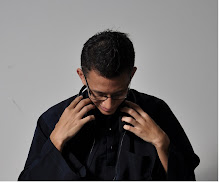Presentation day is on 8 November 2012 which is on UniKL BMI Industry Day. The 2 assessors for my project presentation is sir Zulkifli Mahmoodin and madam Siti Nur Amalia. Both assessors are from Medical Electronics and Electronics Engineering section.
All preparation were done including presentation sheet and poster which is compulsory items that needed for assessment. Research and revision were done on the poster during consultation with supervisor. The supervisor advice that methodology must be related and parallel with literature review and problem statement.
Readmore...
All preparation were done including presentation sheet and poster which is compulsory items that needed for assessment. Research and revision were done on the poster during consultation with supervisor. The supervisor advice that methodology must be related and parallel with literature review and problem statement.








































.jpg)









 Subscribe to email feed
Subscribe to email feed








